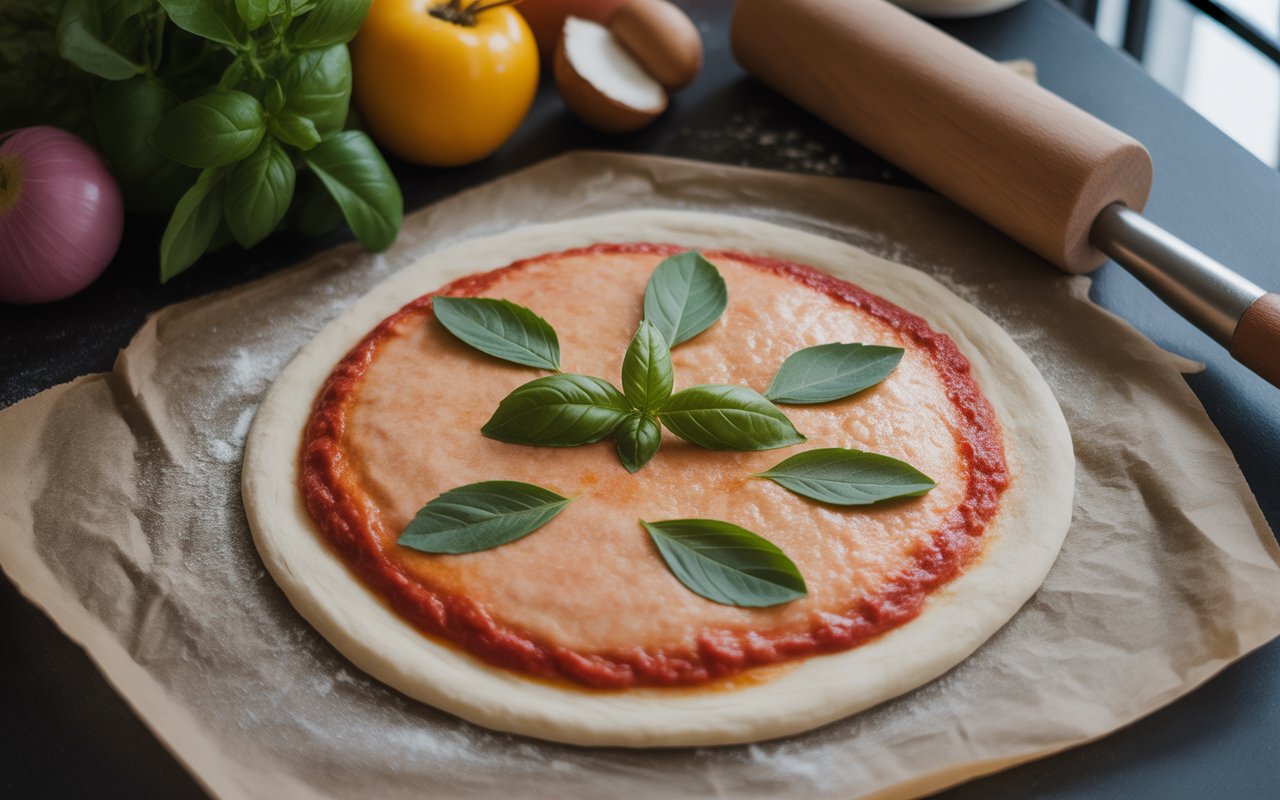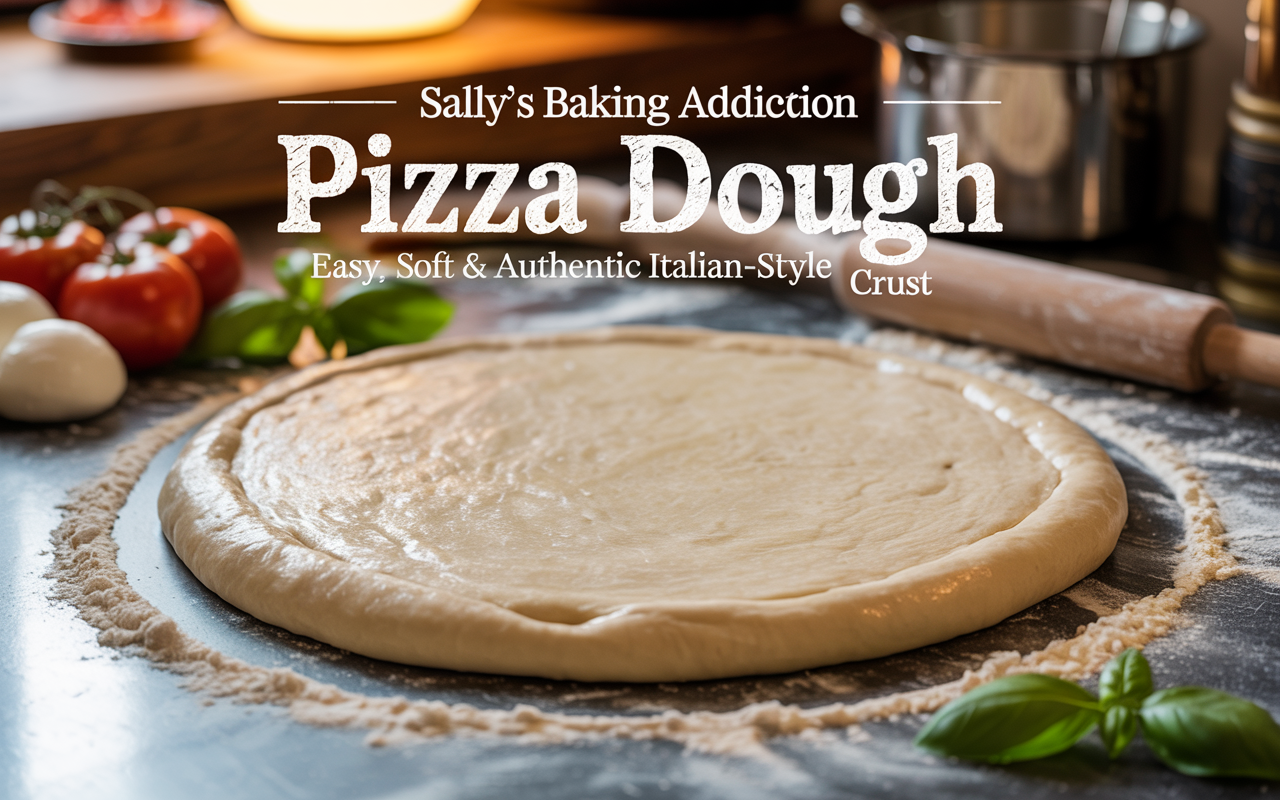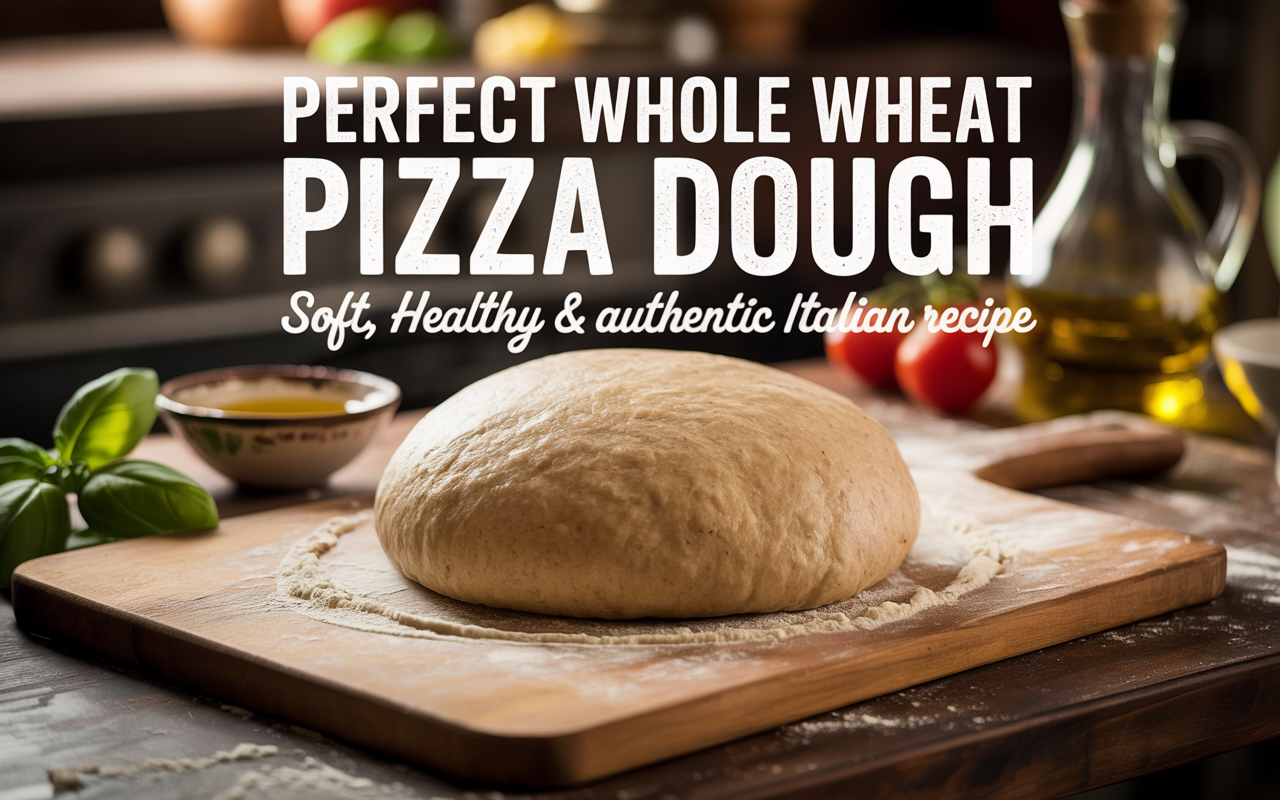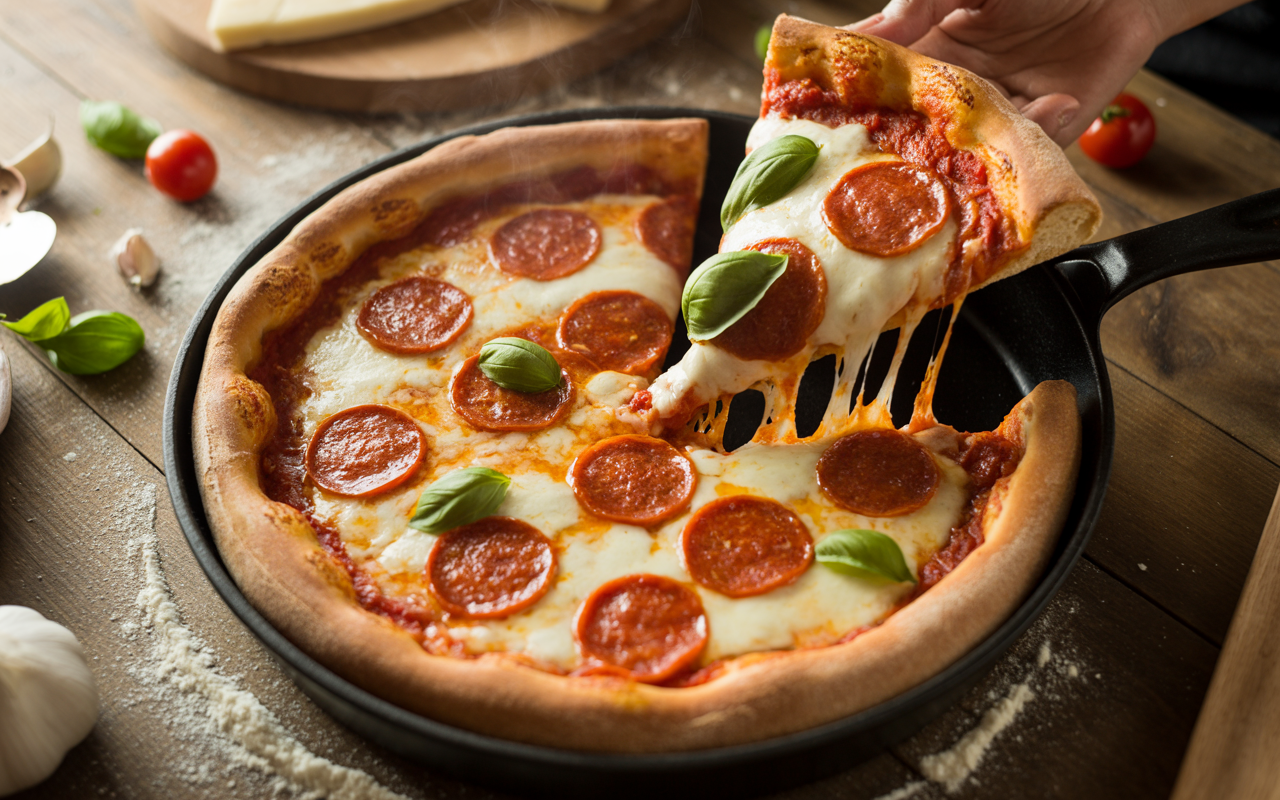🍕 The Ultimate Pizza Base Recipe with Yeast: Homemade Dough that Feels Like Italy
If you’re craving that chewy, airy crust that’s both crispy on the bottom and tender inside—you’re in the right place. This pizza base recipe with yeast delivers that satisfying chew and golden crust that Italian pizza lovers dream of. I’ve spent years dialing in the perfect dough—balancing hydration, fermentation, and flavor. Now I’m letting you in on my go-to method.
Whether it’s a midweek pizza night or an impromptu craving, this yeast-based dough gives you the foundation for real Italian-style pizza at home. No fluff. Just joy in each bite.
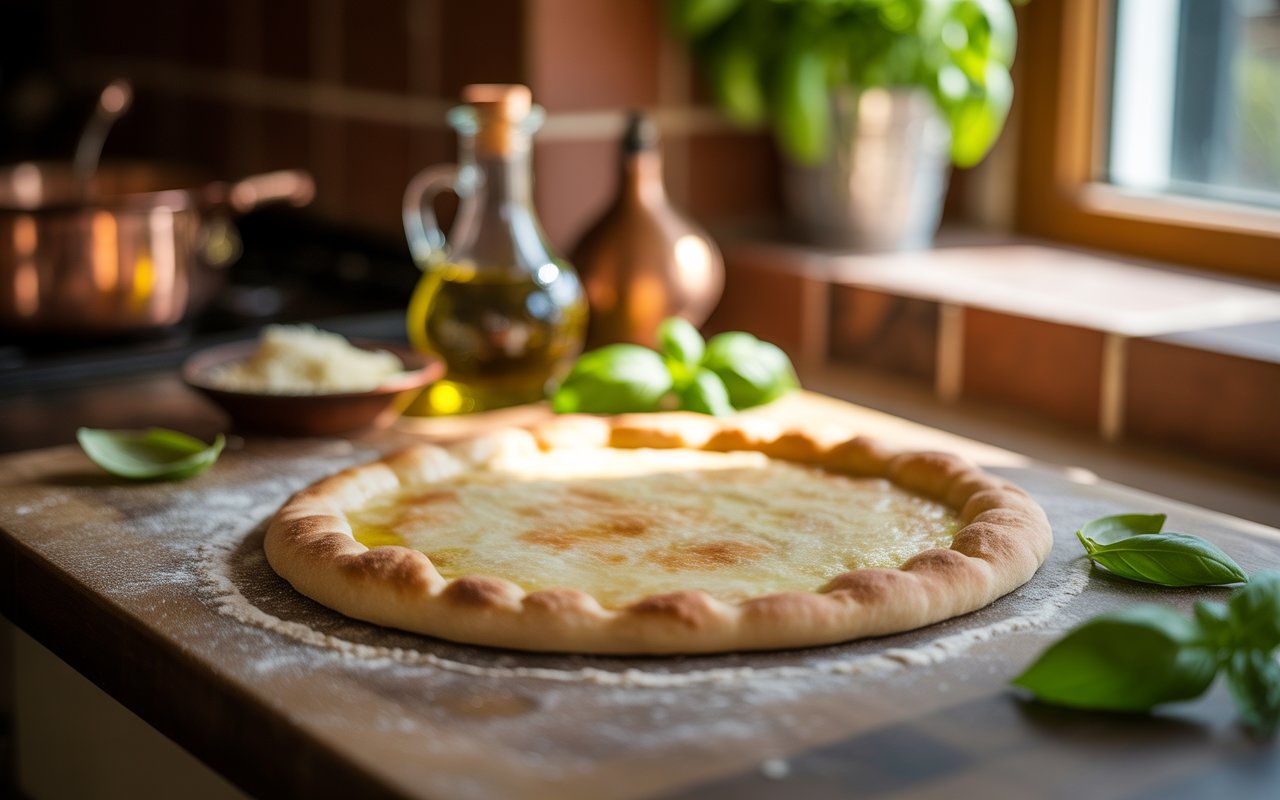
🧾 Ingredients & Measurements (makes two 12″ pizzas)
| Ingredient | Quantity |
|---|---|
| Bread flour (or strong flour) | 500 g (approx. 4 cups) |
| Warm water (100‑110 °F / 38‑43 °C) | 325 ml (1⅓ cups) |
| Instant yeast | 1 tsp (3 g) |
| Fine sea salt | 2 tsp (12 g) |
| Extra-virgin olive oil | 2 tbsp (30 ml) |
| Sugar or honey (optional) | 1 tsp |
If you want to experiment with whole wheat or semolina, see my tips in the Tricks section.
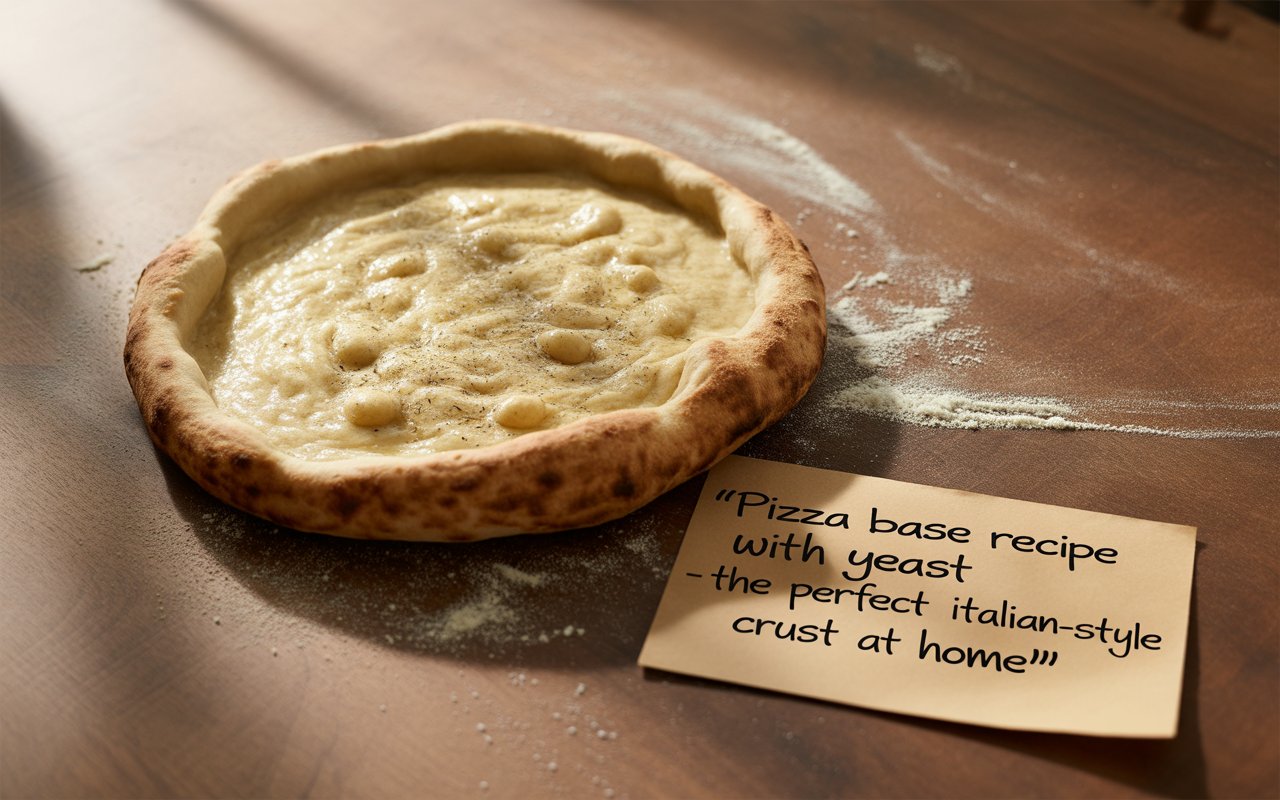
🍕 Why I Love This Dough
This dough is dependable. It stretches easily and bakes into a golden crust with a light chew, thanks to just the right hydration (about 65%). I do a two-step fermentation: a short rise at room temp, followed by a cold ferment in the fridge. That gives the dough character—tiny air bubbles, subtle nuttiness, and a crust that crisps beautifully.
Plus: it’s forgiving. You can stretch it thin for classic Neapolitan style or thicker for a chewy New York base.
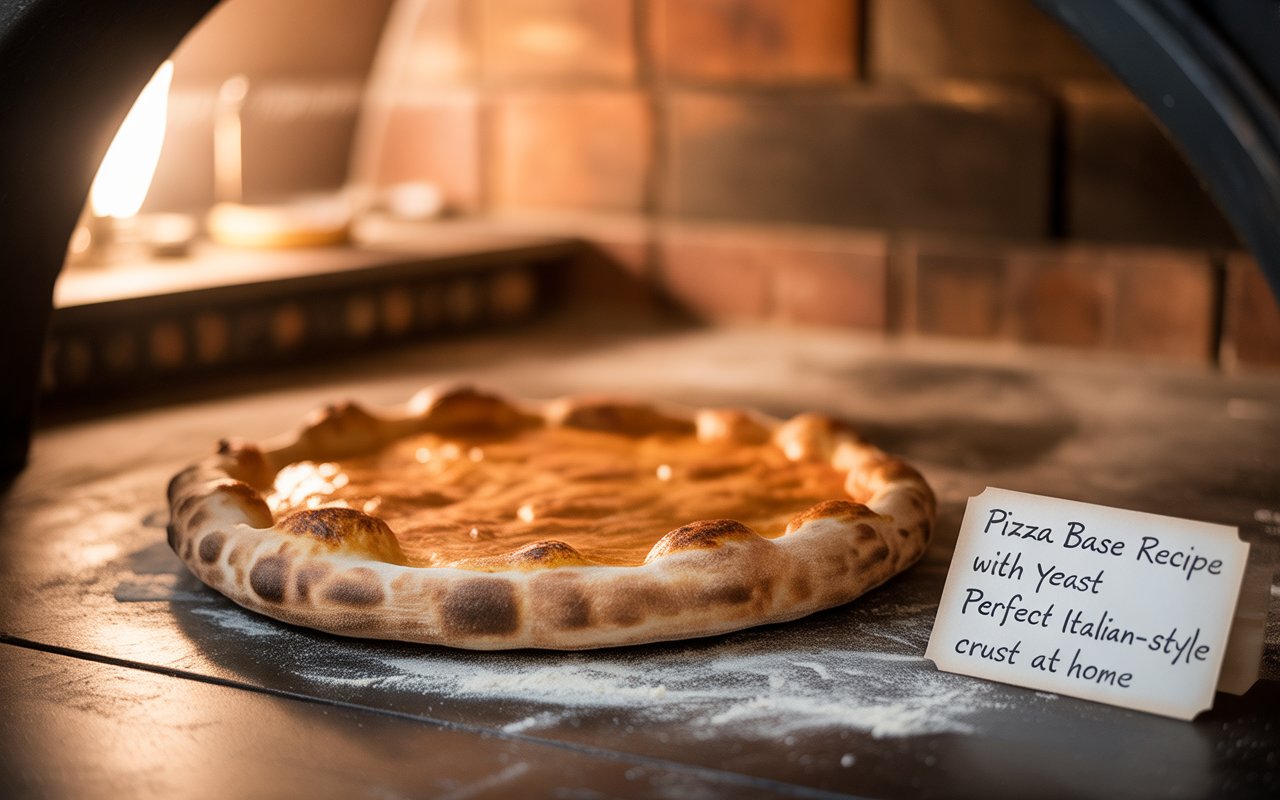
📝 Step-by-Step: How to Make Your Pizza Base with Yeast
1. Mix the dry ingredients
In a large bowl, whisk together flour, yeast, salt, and sugar (if using). This keeps the yeast separate from salt until mixing.
2. Add water and oil
Pour in the warm water and olive oil. Using a wooden spoon or your hand, bring it together until a shaggy dough forms. Scrape the bowl clean.
3. Autolyse (short rest)
Cover the bowl and rest for 10 minutes. This gives the flour a head start, making the dough easier to knead later.
4. Knead to smoothness
Knead by hand or mixer for 6–8 minutes until the dough is smooth, springs back when poked, and doesn’t tear easily. Add a splash of flour if too sticky—but less is more.
5. Room-temp rise
Shape into a ball, lightly oil the bowl, and cover. Let rise for 60–90 minutes at 22–24 °C until doubled in size.
6. Cold ferment (overnight or up to 48 hrs)
After the first rise, punch the dough down, divide it into two or four balls (~250–375 g each), place in oiled containers, and refrigerate. The longer the cold ferment, the more flavor.
7. Bring to room temperature
Let dough balls sit out 45–60 minutes before shaping. This makes them pliable and easier to stretch.
8. Shape your company-style base
Dust a peel or board with semolina or fine cornmeal. Stretch each ball into a 12-inch round. Leave a slightly thicker edge for that airy crust.
9. Top and bake
Heat your oven with a pizza stone or steel at 250 °C (or max) for at least 45 minutes. Add sauce, cheese, toppings, and bake 7–10 minutes until crust puffs and browns. Finish with a quick broil if necessary.
🔧 Tips & Tricks for the Perfect Yeasted Dough
- Use high-protein bread flour. It gives strong gluten and that classic chew.
- Hydration matters. Around 65% water creates the right balance between stretch and structure.
- Cold ferment adds flavor. The slow rise in the fridge brings out nuttiness and depth.
- Use semolina or cornmeal. Helps the dough not stick and gives a slight crunch underneath.
- Brush with olive oil on edges before bake. Helps create blistered golden pockets.
- Heat is critical. A hot stone or steel is non-negotiable for proper crust development.
❓ FAQ — Your Pizza Base Questions Answered
Is this dough suitable for a pan pizza?
Yes. Stretch it thicker (~1 cm), place in a well-oiled sheet pan, add toppings, and bake at 220 °C for 18–20 minutes.
Can I freeze the dough?
Absolutely. Freeze dough balls after portioning for up to 3 months. Thaw in fridge overnight, then bring to room temp before shape.
What if I’m out of yeast?
Use sourdough starter instead—replace yeast and most water with an equal weight of active starter (fed a few hours before). Add minimal yeast for backup (~¼ tsp).
Can I use olive flour or gluten-free flour?
Not directly. For whole wheat, use max 25% substitution. For gluten-free, mix with expert store-bought blends made for yeast dough.
How can I avoid soggy crusts?
Use low-moisture cheeses. Don’t overload sauce. Skip juicy vegetables or roast them beforehand to remove water.
🧡 Final Thoughts — Make It Your Own
This pizza base recipe with yeast is foundation for all kinds of pizza expressions. From veggies and meats to white sauce blends, this dough holds up and bakes beautifully.
It’s a simple dough with maximum impact. You get texture, flavor, aroma in every bite. The fermentation adds depth, the high gluten gives chew, and the oven heat builds breath-taking crust.
Want to personalize further? Try adding chili flakes to dough for heat, fresh herbs into the oil, or substituted flours for unique textures.
Most importantly: pizza is made in the kitchen with joy. This crust is your canvas. Paint it with sauce, cheese, and optimism. Bake it until it sings. Then slice and celebrate.
See Also: Pizza Bake Recipe – Cheesy, Easy & All the Flavor of Pizza in a Casserole


